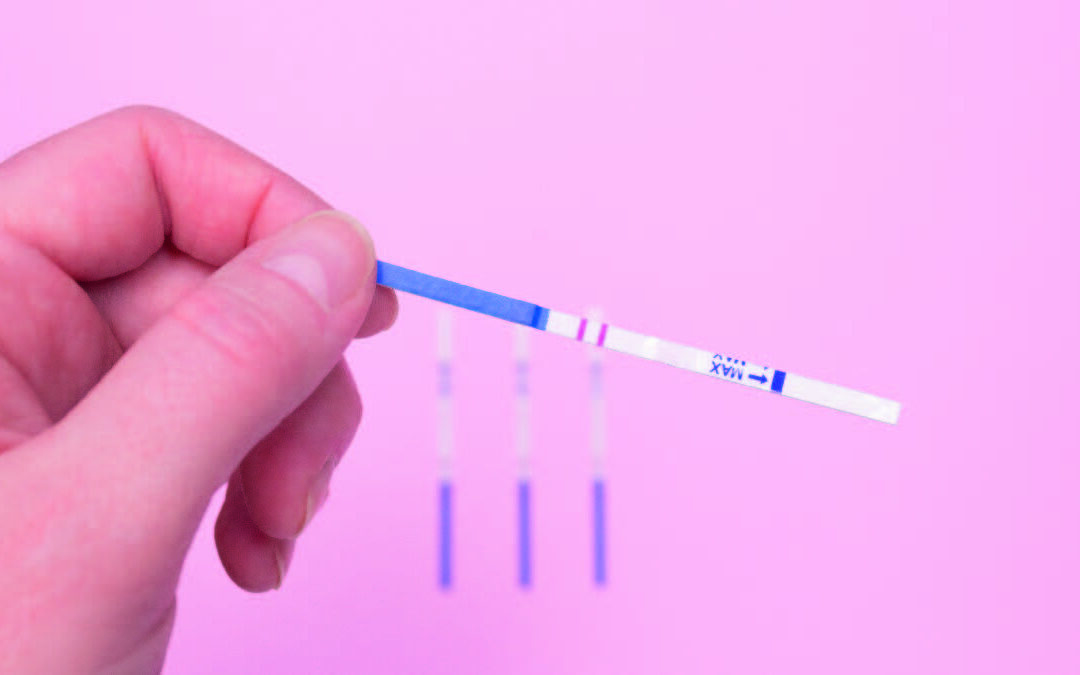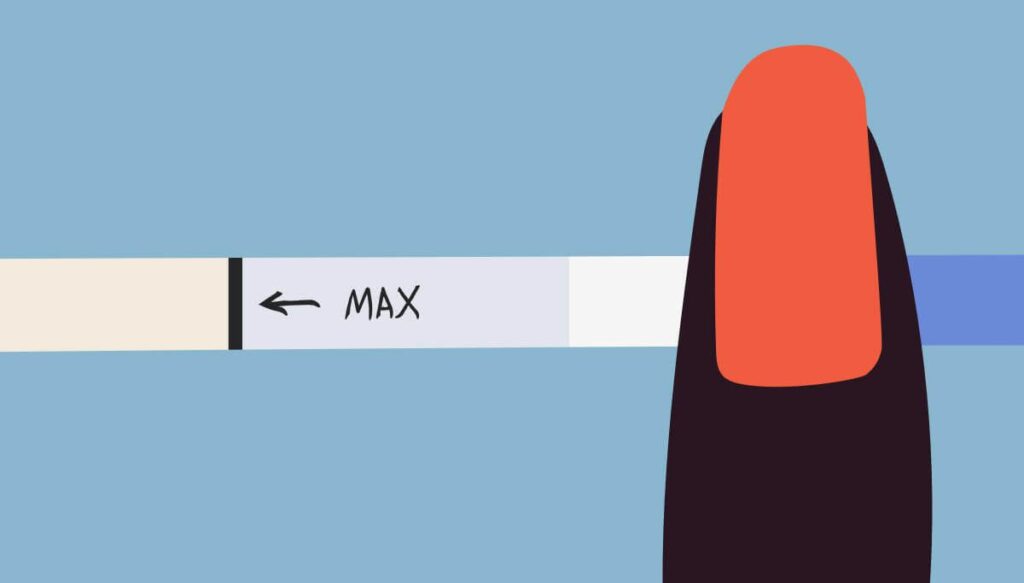It’s not easy to get pregnant. If it happens unintentionally – well, good for you, but if a couple is trying to get pregnant, they need a lot more than just sheer luck.
To improve the chances of a couple conceiving, Ovulation Predictor Kits (OPKs) come into play. These kits help monitor the time when you’re fertile and have increased chances of getting pregnant.
In this article, we’ll be guiding you through the entire process on how to use an ovulation kit, what results to expect, and should you go for them or not.
Let’s get started!
Everything You Need to Know About Ovulation Predictor Kits (OPKs)
Let’s go over the basics to make sense of ovulation kits.
Every month, ovaries release a mature egg into one of the fallopian tubes. Before its release, LH (luteinising hormone) peaks up to five times its standard value. Once released, the egg stays in the fallopian tube for 12-24 hours, known as the fertile window.
If you have sexual intercourse during this time, the sperms (that can live in the female body for five days) will fertilise the egg – and voila, you’ve conceived!
What Is An Ovulation Kit?
LH surge is an important indicator to determine your fertile window – and this is precisely the job of an ovulation predictor kit. Ovulation predictor kits measure the levels of LH in your body, allowing you to know when you’re ovulating and when is the ideal time to have sex to get pregnant.
The most widely used and accepted version of ovulation kits is strip-based tests. You urinate in a cup or on top of the stick, and that’ll be all. Then, after 5 minutes, you’ll get to know if you’re ovulating or not.
How To Use An Ovulation Kit?
Women with regular cycles should use an ovulation kit on day 14. It comes with at least five strips or sticks. You can either pee on it or dip it in a cup filled with your urine to detect levels of LH.
There are two lines present on the stick: control and test line. The control line shows if the device is faulty or not, whereas the test line confirms LH surge. If the test line is darker or the same colour as the control line – it means that you’re ovulating.
If you have regular cycles, your best bet is to check fourteen days before the next cycle begins. But it can get trickier for females with irregular cycles. In this case, it’s better to go with your shortest cycle.
Are Ovulation Kits Accurate?
When it comes to accuracy, ovulation kits do a pretty good job. There are 99% chances of knowing whether you’re ovulating or not. They are remarkably accurate in comparison to a calendar-based approach or maintaining a menstrual cycle diary anyway.
While they are not bad options – an OPK can help confirm if everything is going according to your calendar/diary or not.
Ovulation Kits VS Fertility Monitors
We understand that thinking of starting a family with your better half is an enchanting feeling. Therefore, it’s natural to have the desire of making sure that everything is perfect and spot-on.
As technology has advanced significantly, fertility monitors have been giving ovulation kits a pretty tough time. So here’s a comparison for you to determine which fertility predictor is the best for you!
|
Fertility Monitors |
Ovulation Kits |
| Allows you to track the menstrual cycle better | No tracking facilities |
| Expensive | Very affordable |
| Measures estrogen apart from LH | Only measures LH |
| Fertility monitors can be compatible with your iPhone | Not compatible with iPhone |
| It reminds you when to take tests | No reminders |
| Easily understandable, digitalised results | Unclear, faded lines |
| Maybe a little tricky to use | Highly convenient and easy to use |
| It shows all your fertile days | Only shows two days of your fertility |
There’s another fertility predictor test known as “Saliva testing”. During ovulation, levels of estrogen and salt increase in our bodies. These changes can be detected in the dried saliva under the microscope, appearing as fern leaves.
However, it’s not very popular since it is inconvenient.
Pros and Cons of Using Ovulation Predictor Kits
Everything has its positives and negatives. However, we have to determine which side weighs more to go for it finally.
Similar is the case with ovulation predictor kits. Following are some of the pros and cons that’ll help you decide if they are perfect for you not:
– Pros:
Here are all the reasons for you to choose an OPK:
- Incredibly convenient
- Available at almost every pharmacy
- Easy to use
- Very affordable
- It does a great job at telling you if you’re approaching ovulation or not
– Cons:
Here are the cons that you might want to consider before buying an OPK:
- You may get a false result
- Sometimes it is unable to confirm the ovulation
- Unclear results
- It doesn’t work well for women with PCOS
- You can’t track your menstrual cycle
Despite its cons, ovulation predictor kits are widely used by women. Whether it’s because of the accessibility or the fact that everyone knows about them – OPKs are undoubtedly popular among females!
Negative Results In Ovulation Predictor Kits
Negative results in OPKs are when you get a darker line (indicating the test is positive), but you’re not pregnant. It is so because certain conditions may bear false results. They can be any one of the following:
- Stress
- PCOS
- Having a strenuous workout routine
- Medications
- Ovarian cysts
- Insulin resistancE
- Thyroid, renal, and liver diseases
- Weight disturbances
- Testing too early or too late
- Irregular menstrual patterns
It will be ideal to consult a healthcare professional and discover any underlying medical conditions to resolve such issues.
Conclusion
It’s no doubt that ovulation predictor kits have made lives more manageable. There’s no need to keep up with a calendar and mark your cycles anymore. Instead, you can check if you’re ovulating or not, all thanks to the ovulation kits.
However, please know that they are not 100% correct. Certain conditions may produce negative results and don’t point towards pregnancy. But don’t worry, OKPs are still incredibly accurate when it comes to predicting fertility.



Recent Comments